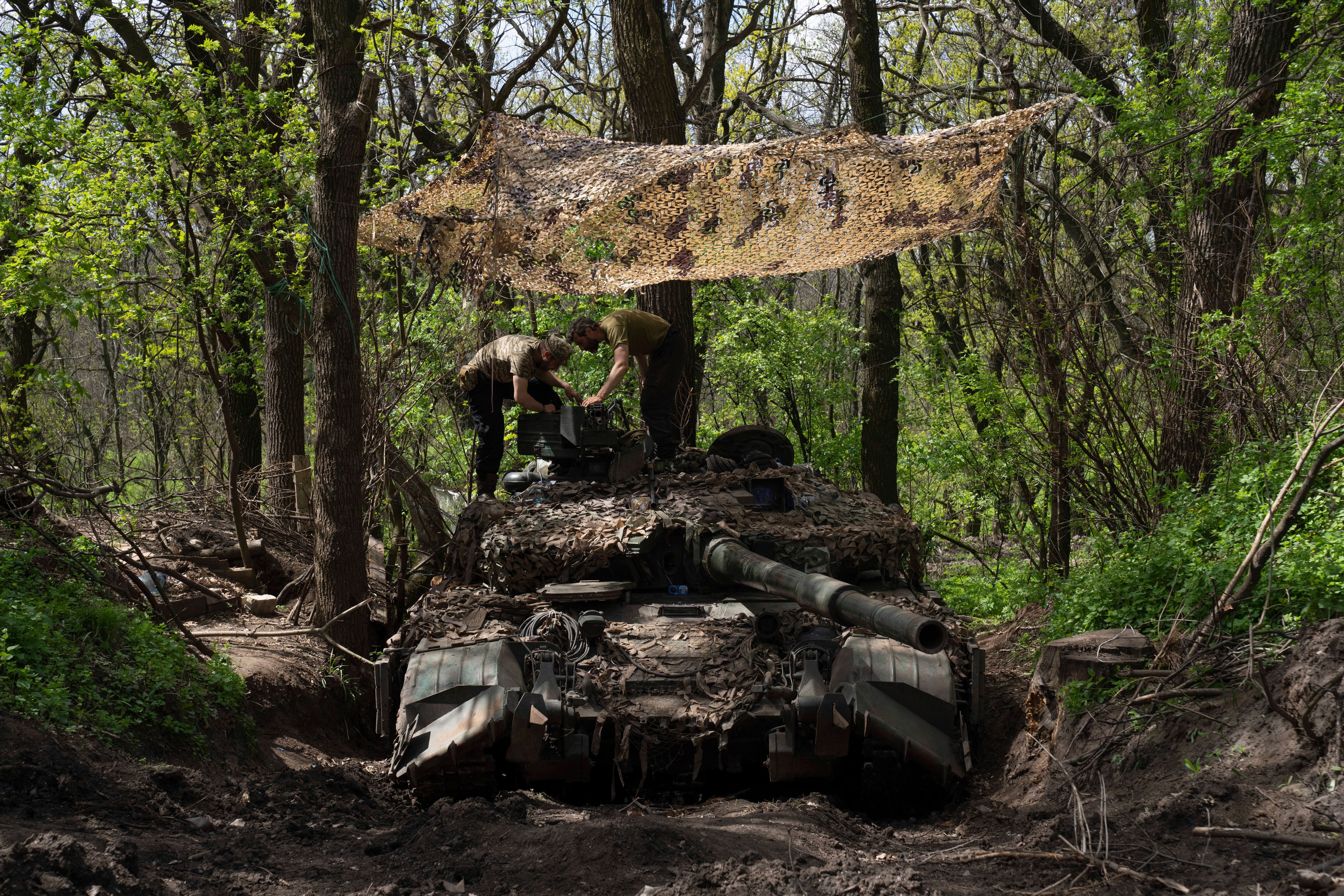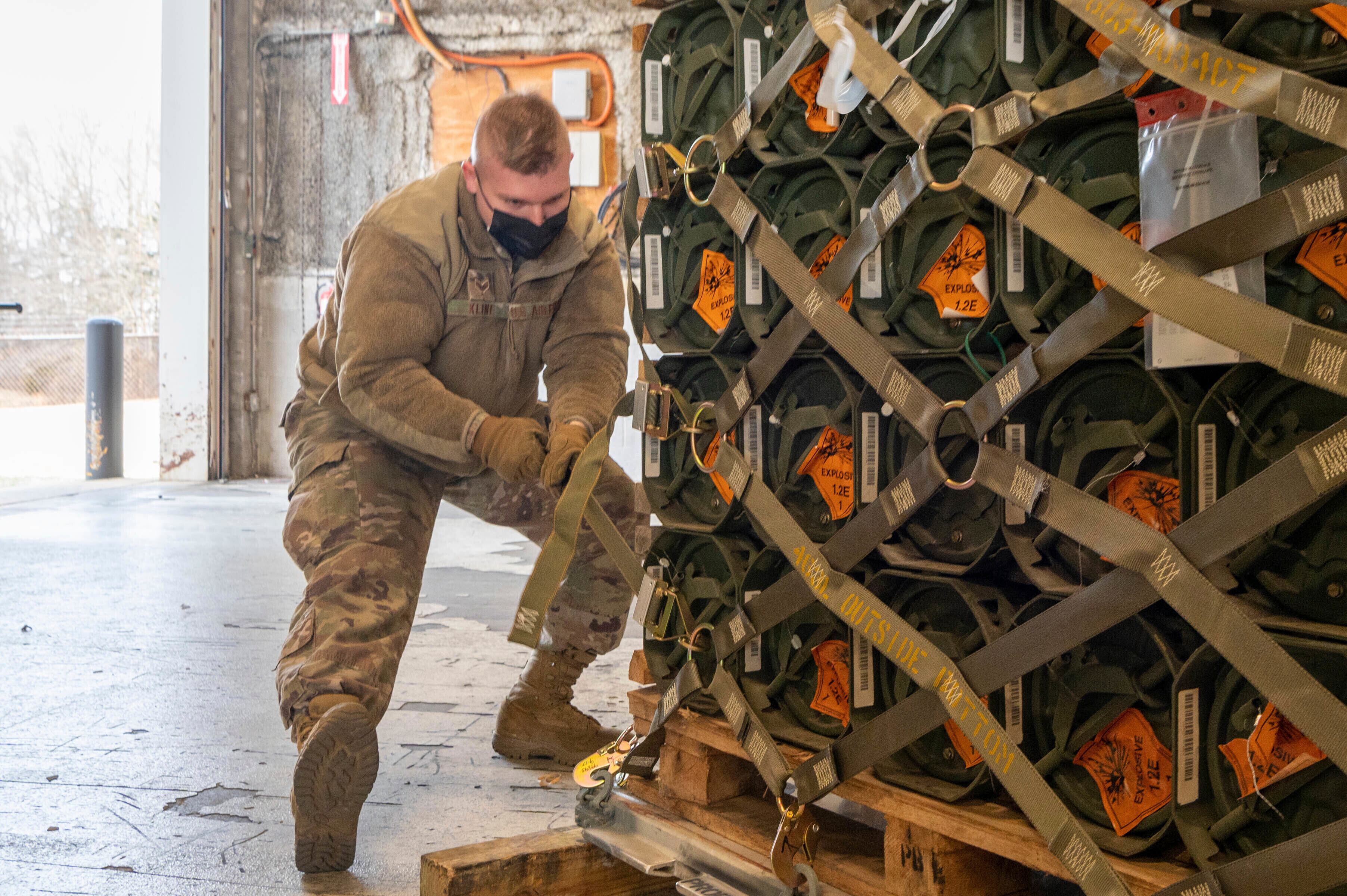WASHINGTON ― As some Eastern European nations send their Soviet-era kit to help Ukraine defend itself against Russia’s attack, the new weapons those nations stand to get in return from the United States and its allies could shape the continent’s arsenal for years to come.
The tactic of backfilling donated tanks in Poland, air defense gear in Slovakia and armored trucks in Slovenia, for example, is meant to beef up Ukraine’s resistance while offering European Union members a way to remain out of direct conflict. The transactions, many of which go unpublicized, add a new dynamic to an already volatile military procurement pattern in Europe that clashes with the bloc’s lengthy plans for collectively developed weapons.
“When it comes to new equipment, the Eastern European partners will primarily turn to the United States,” said Matthias Wachter, chief defense analyst at the German industry association BDI. “Germany and France have unfortunately disqualified themselves in the eyes of many eastern Europeans by way of their reluctant stance on military support for Ukraine.”
For example, Poland is in line to receive an undisclosed number of Challenger 2 tanks from the U.K. to backfill its supply of T-72 tanks to Ukraine. That’s in addition to the planned purchase of 250 Abrams tanks from the United States in a deal worth almost $5 billion.
As a result, Poland, once interested in joining the German-French Eurotank development effort, will now be flush with modern tanks for decades to come, Wachter noted.
Washington has worked for years to get former Warsaw Pact countries to replace their Soviet-era equipment with NATO-compatible kit. A $713 million tranche of aid announced Monday, aimed at Ukraine and its neighbors, is meant to do just that.
With the new package, the U.S. stands to benefit both strategically — getting partners and allies off Russian equipment to improve interoperability and deny money for Moscow — and financially, thanks to the subsidization of American weapons abroad.
The aid does include Soviet-era ammunition, rockets and artillery for Ukraine to use for the fight now, but the Biden administration also foresees Ukraine and its neighbors using more Western equipment over the long term, according to a U.S. government summary obtained by Defense News.
The summary ticked off dozens of categories of Ukrainian military needs ― from night-vision devices to multiple launch rocket systems ― that could be fulfilled by the U.S. or other NATO allies.
The package announced Monday included, beyond Ukraine, more than $300 million divided between more than a dozen Central and Eastern European countries ― for equipment, training or both. Billed as backfilling supplies of weapons that countries are sending Ukraine, the State Department-controlled Foreign Military Financing is also meant to “enhance partner military integration with NATO,” the summary read.
NATO aspirant Georgia’s $35 million portion would support the fielding of “brigade combat equipment sets,” counter-drone technologies and the Advanced Field Artillery Tactical Data System, which is a joint and coalition command-and-control fires support system.

Another $23 million would go to Bosnia and Herzegovina, from the Europe Recapitalization Incentive Program, which the U.S. State Department launched in 2018 to speed up the process of getting allied nations off Russian gear. The money would buy an additional two medium-lift helicopters in addition to four UH-1H helos delivered in 2021 through the program.
The package would provide:
- Estonia, Latvia and Lithuania: $54.5 million each
- Albania: $17 million
- Bulgaria: $34.5 million
- Croatia and Moldova: $15 million each
- Montenegro: $4.9 million
- North Macedonia: $28 million
- Romania: $35 million
- Slovenia and Slovakia: $9.5 million each
- Czech Republic: $520,000
The State Department fulfilled its obligation to notify Congress in recent days in order to get the funding in place, but not all of the specifics are finalized, according to a U.S. government official not authorized to speak about the matter on the record.
“We’ve been working for years, especially among the NATO allies, to get rid of the remainder of what Warsaw Pact material they’ve got because, No. 1, they’re NATO members, so we want that interoperability and we want to eliminate the potential for Russian leverage, if they’re dependent on Russia [for equipment],” the official said.
The announcement of the aid came as U.S. Defense Secretary Lloyd Austin held the inaugural meeting of defense leaders from over 40 nations to better coordinate efforts in support of Ukraine’s defense against Russia, which invaded its neighbor Feb. 24. Austin has been at the center of U.S. efforts to spur European nations to send their older equipment to Ukraine in exchange for Western gear.
Though this latest aid package includes so-called nonstandard ammunition Ukraine can immediately use, whether Kyiv ultimately turns to NATO-compatible equipment is not a given.
“I don’t think Ukraine’s made a decision about that. And you can’t really expect them to have made a decision right now while they’re fighting for their lives,” Pentagon press secretary John Kirby said Wednesday.
The U.S. is providing equipment to backfill allied countries because some are risking their own security by sending that equipment, and “it’s the responsible thing for us to do, to have conversation[s] with these allies and partners about what their needs are going to be going forward as well,” Kirby said.
Just as the Pentagon is using a stepped-up dialogue with the American defense industry to probe its ability to meet the needs of the U.S. military, its allies and Ukraine, Austin asked the assembled leaders to assess the “health and vitality” of their own defense-industrial bases, in light of a new reality in Europe, Kirby said.
“We know that whatever happens here, however this war ends, the security landscape in Europe has changed. Not ‘is changing,’ not ‘will change,’ ” Kirby said.
Joe Gould was the senior Pentagon reporter for Defense News, covering the intersection of national security policy, politics and the defense industry. He had previously served as Congress reporter.
Sebastian Sprenger is associate editor for Europe at Defense News, reporting on the state of the defense market in the region, and on U.S.-Europe cooperation and multi-national investments in defense and global security. Previously he served as managing editor for Defense News. He is based in Cologne, Germany.





